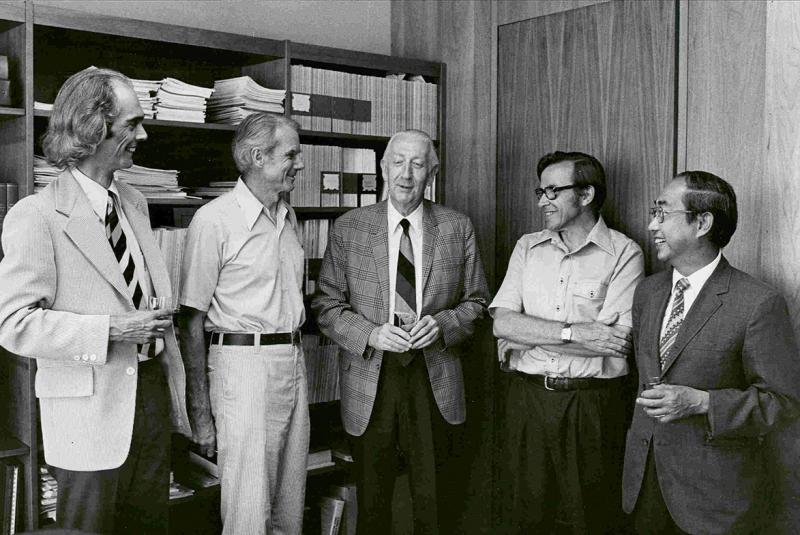About Us
The Southeast Asia Program (SEAP) was founded in 1950 to promote the acquisition and dissemination of knowledge about countries, cultures, and languages of the region.
SEAP's 28 core and 7 emeritus faculty members create a collective knowledge of Southeast Asia that amounts to one of the world’s greatest concentrations of expertise on the region. Six senior language lecturers teach four levels of study in Burmese, Indonesian, Khmer, Tagalog, Thai, and Vietnamese.
Since 1958, the U.S. Department of Education has continuously recognized SEAP as a Title VI National Resource Center. As an NRC for more than six decades, we train experts on the region; meet strategic national needs in government, business, science, and professional fields; and provide K-16 educational outreach.
SEAP has three unique resources: the John M. Echols Collection on Southeast Asia, the George McT. Kahin Center for Advanced Research on Southeast Asia, and SEAP Publications. The Echols Collection is the largest collection on the region, with over 500,000 monographs in 162 indigenous languages. The Kahin Center is an academic home to SEAP graduate students, visiting fellows and scholars, faculty members, and SEAP's publication and outreach offices. SEAP publishes Southeast Asian monographs and language textbooks, including the only journal exclusively on Indonesia, and provides open-access downloads of its Cornell Modern Indonesia Project (CMIP) and SEAP Data papers.
Cold War Beginnings
As the Southeast Asia Program focuses on a region of the world that was among the most volatile in the decades following World War II, it was inevitably caught up in many of the conflicts over foreign policy that raged among American academics and policy makers during that period.
The program was founded in the early years of the Cold War, when American interest centered not only on the Soviet Union but also on the perceived threat of the new Communist government in China and the fear that communism would spread southwards to the former colonial countries of Southeast Asia. In the 1960s, Washington’s focus on the region became even more intense as the United States became directly and massively involved, both politically and militarily, in the countries of Indochina.
SEAP was established in 1950, when the Rockefeller Foundation, aware of the region's growing importance in international affairs, became interested in sponsoring research and teaching on East and Southeast Asia. A Southeast Asia Program headed by Raymond Kennedy, a historian working on the Netherlands Indies, had already been established at Yale with Carnegie funds. But C. Burton Fahs, who headed Rockefeller's division on Asia and was himself a Japan historian, felt that the Yale program should have competition and believed that another program focusing principally on mainland Southeast Asia should be established at some other university.
A Southeast Asia Program at Cornell
Cornell was a natural candidate, for over the previous decade, Lauriston Sharp, a young anthropologist working on the Thai peoples, had been fostering Southeast Asian studies. Sharp had joined Cornell's faculty in 1936 and soon became the first chairman of the university’s newly established Department of Anthropology and Sociology. In early 1945 Sharp was called to Washington and spent over a year as assistant director of the Southeast Asia Division of the State Department, where he was shocked to discover the scant knowledge of Southeast Asian countries on which American policy toward the area was based.
In 1947, a year after Sharp's return from Washington, the Carnegie Corporation awarded Cornell a grant for advanced work in anthropology, and with his share of these funds Sharp established the Cornell Thailand Project focusing on "the study of the social and psychological effects of technological change" in rural Thailand.
Expanding Coverage
During SEAP's first three years of operations it succeeded in spreading Cornell's coverage of Southeast Asia from Thailand alone to virtually every major country of the region except for the Indochinese states, with special emphasis on Indonesia, Burma, and the Philippines. Indonesia became a major focus of graduate research after George Kahin joined SEAP in 1951 and became its executive director, and when in 1952 John Echols, a specialist on language and linguistics, who had prepared the first Indonesian language program for the State Department's Foreign Service Institute, also joined the program and took a central role not only in language teaching but also in developing the library’s holdings on Indonesia and Southeast Asia as a whole.
Recognizing Cornell’s strength on modern Indonesia, the Ford Foundation decided to fund a project at Cornell under Professor Kahin’s direction, focused on Indonesia’s government and politics. In 1953, Frank Golay, an economist working on the Philippines, who had been serving in the international division of the Federal Reserve Board, joined SEAP, extending its coverage geographically and to another discipline. These four men—Sharp, Kahin, Echols, and Golay—formed the core of the program as it developed during the 1950s and beyond.
Based on "Growth and Crisis: Cornell Southeast Asia Program's First Two Decades," by Audrey Kahin (SEAP Bulletin, 2007)

